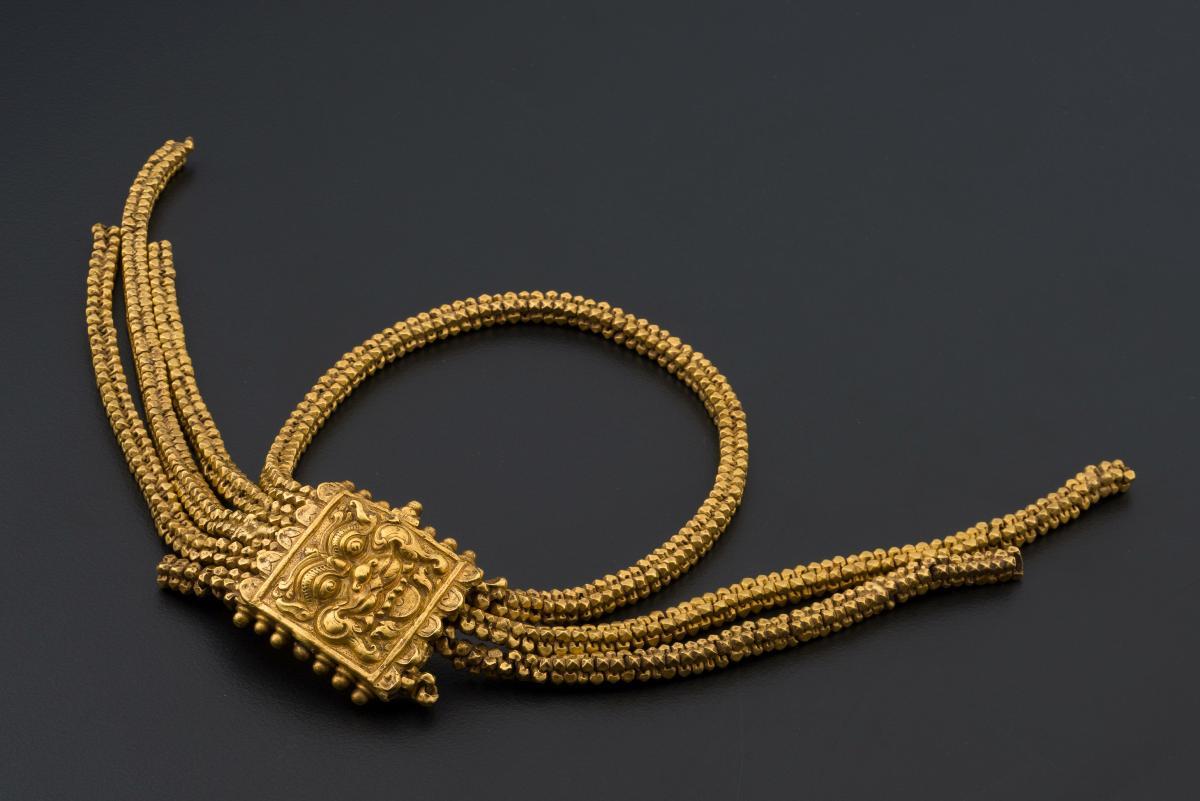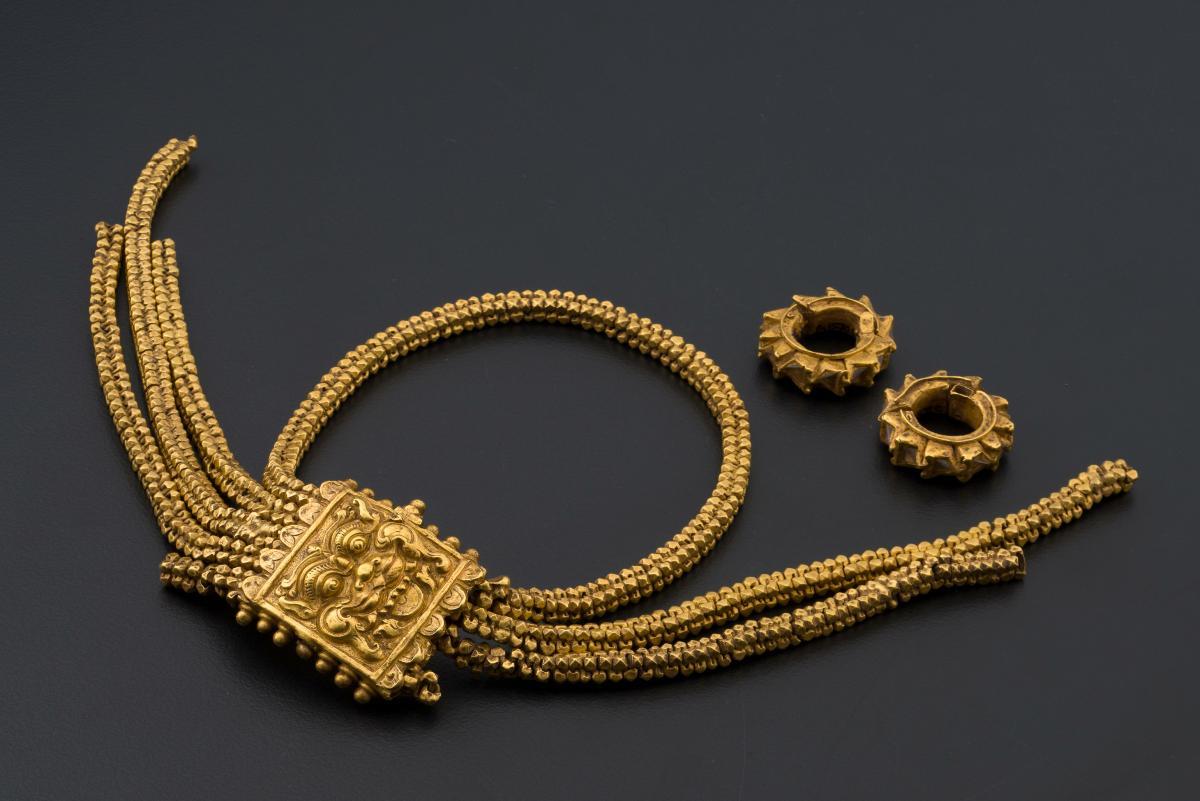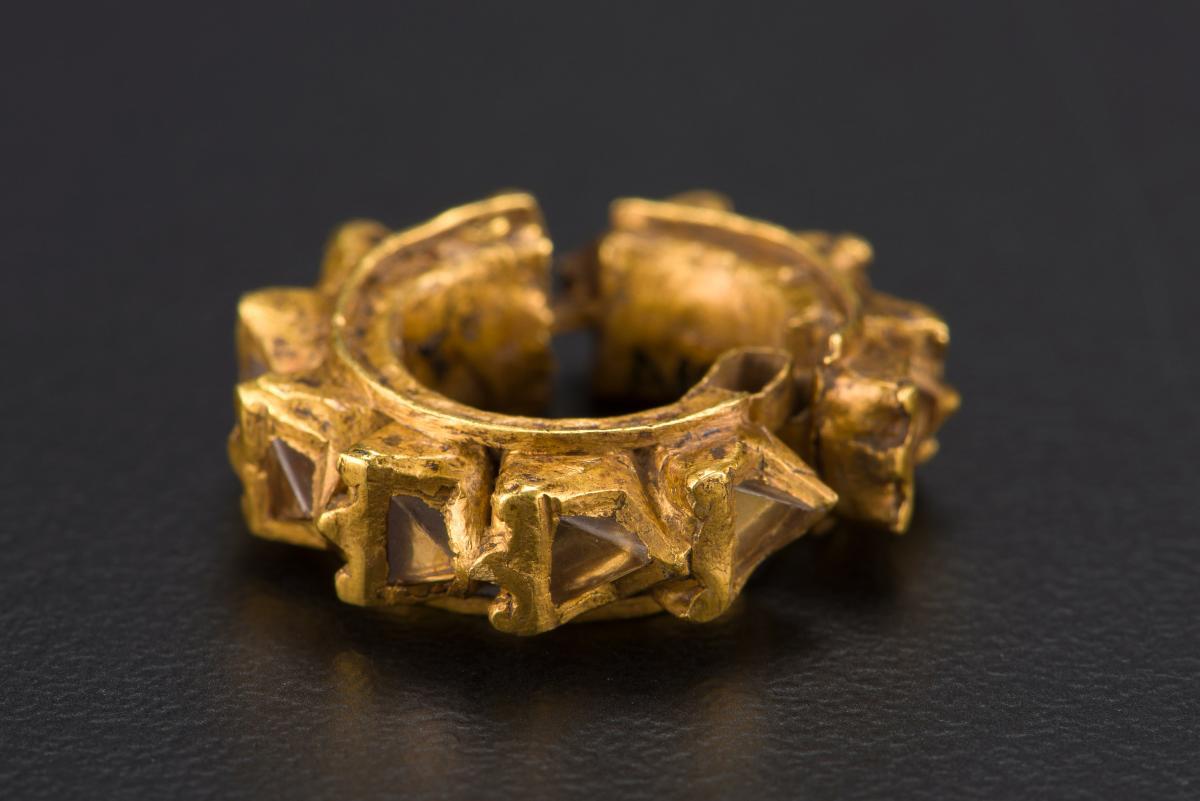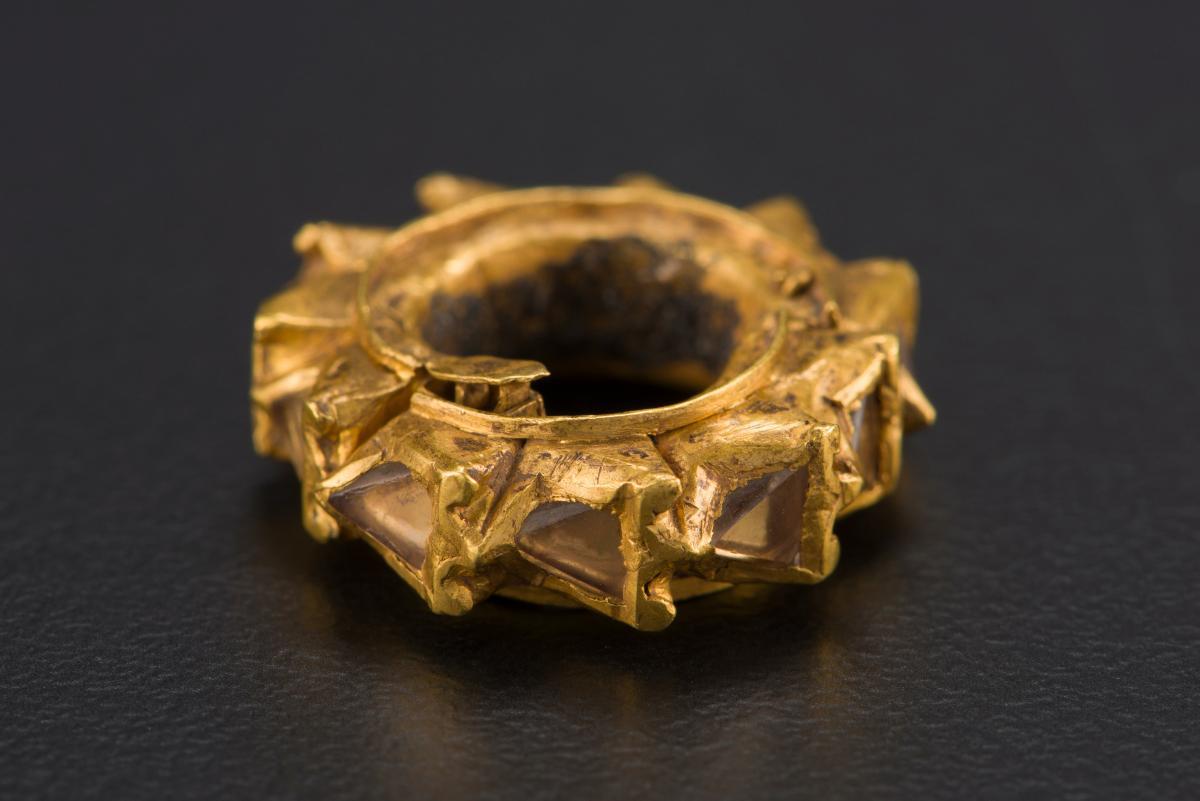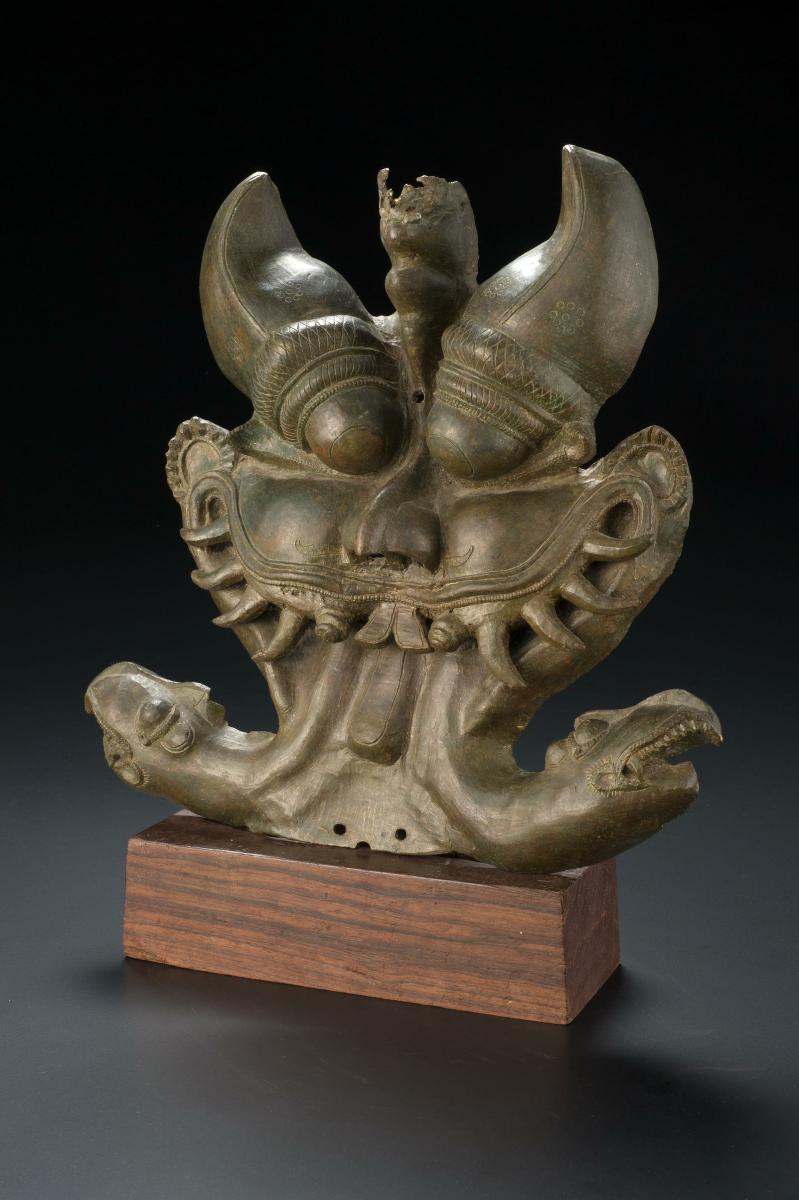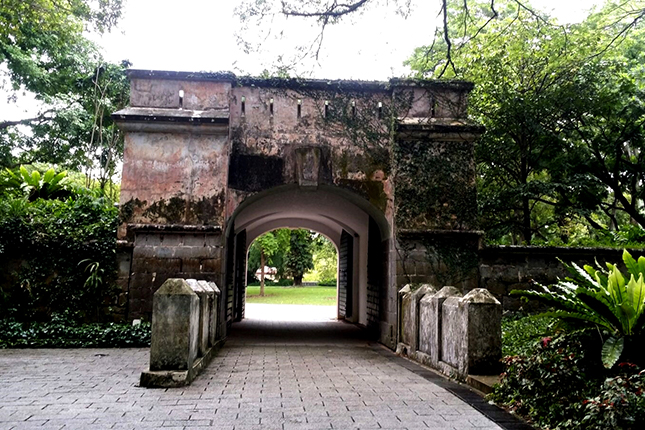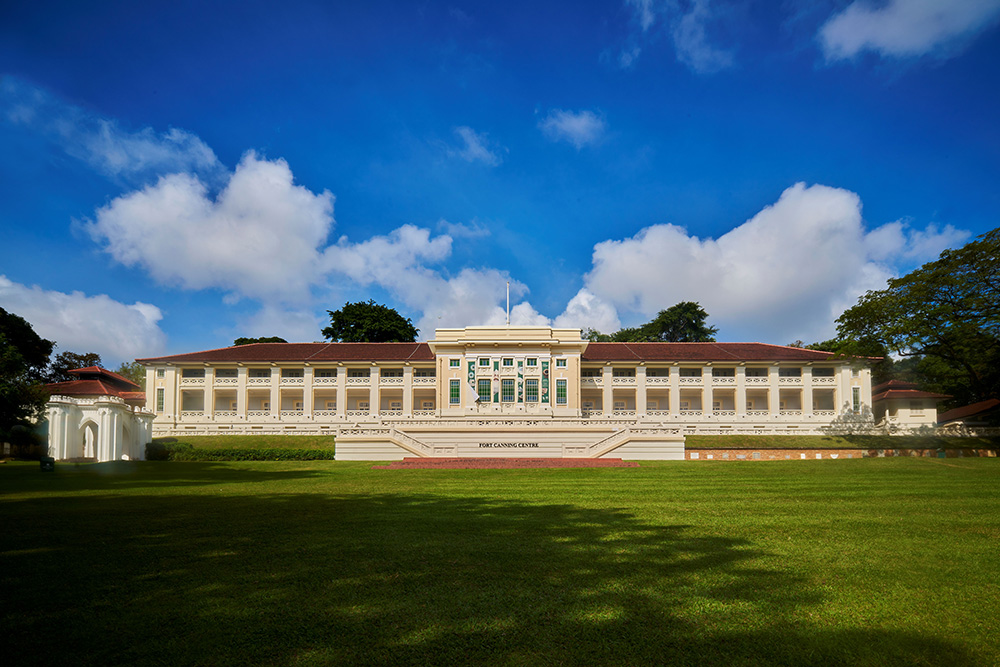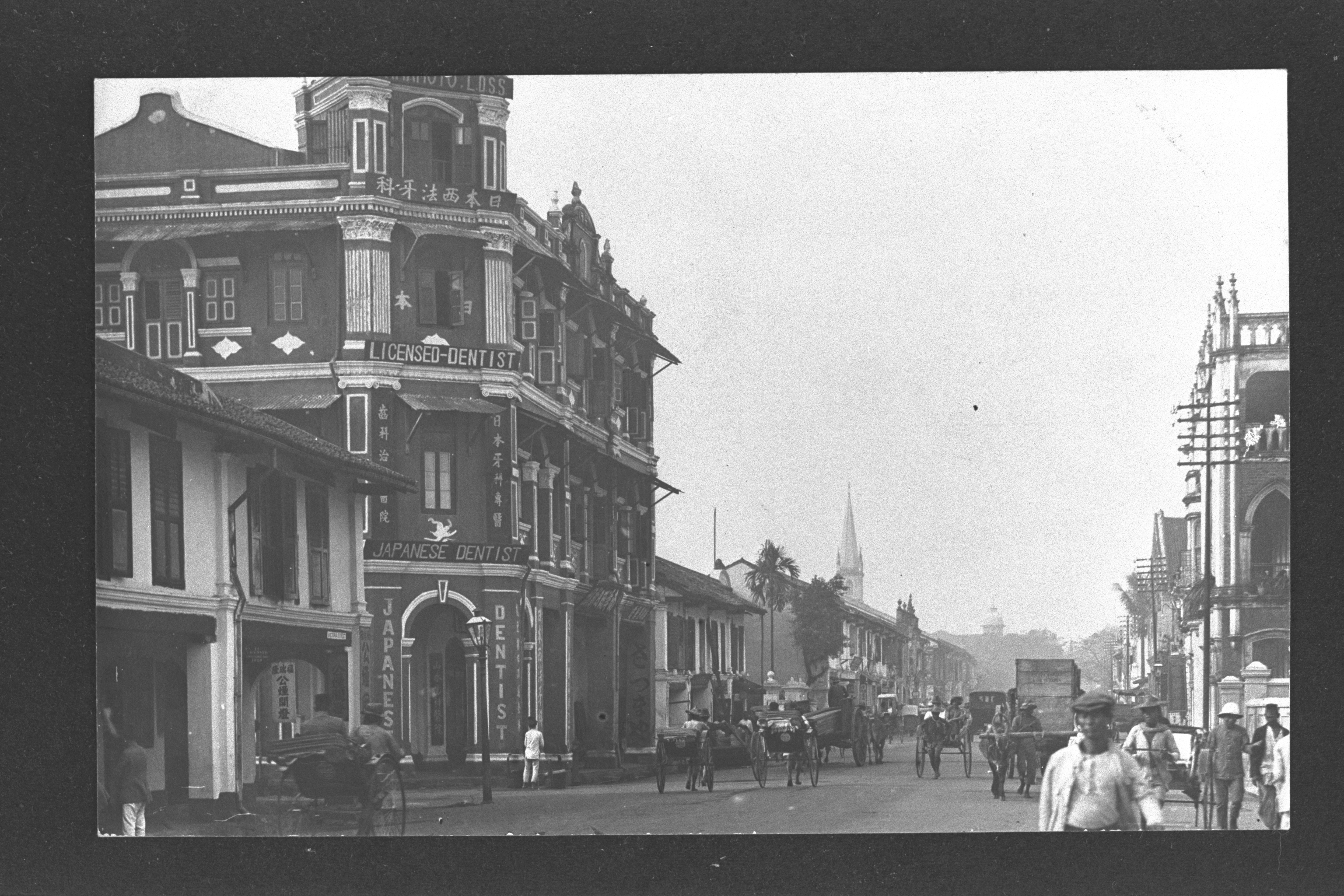This is a gold armlet found at Bukit Larangan, otherwise known as Fort Canning. It was discovered in 1928 a few meters away from Keramat Iskander Shah (believed to be the shrine of the last Malay king of Singapura) due to excavation works undertaken at Fort Canning for a new reservoir. The armlet was found along with 10 other pieces of jewellery (consisting of armlets, earrings and gold rings), however, only an armlet and two earrings remain in the collection of the museum. The armlet bears the face of a kala, a demon of Hindu mythology associated with immortality and a common motif featured on Javanese temples. The bands of the armlet can be fastened with a series of clasps, allowing one to easily wear or remove the armlet. While there were originally five bands, only one remains fully intact. As Singapore possesses no natural geological deposits of gold, the pieces of jewellery likely arrived via trade routes, a testament to Singapore’s pre-colonial connections with the surrounding Southeast Asian region and its significance as a regional trading port by the early 14th century. It is possible that these pieces were brought by visiting traders or elites. Such ornaments would have served as visual indicators of social status or gifts as a means of forging valuable alliances. In particular, the quality of the armlet suggests that it could have belonged to a member of royalty. More precise dating indicates that the hoard of jewellery likely dates to the mid-14th century, after Singapore was captured by the Javanese Hindu maritime empire, the Majapahit, in 1360 A.D. and came under its cultural and political ambit.




